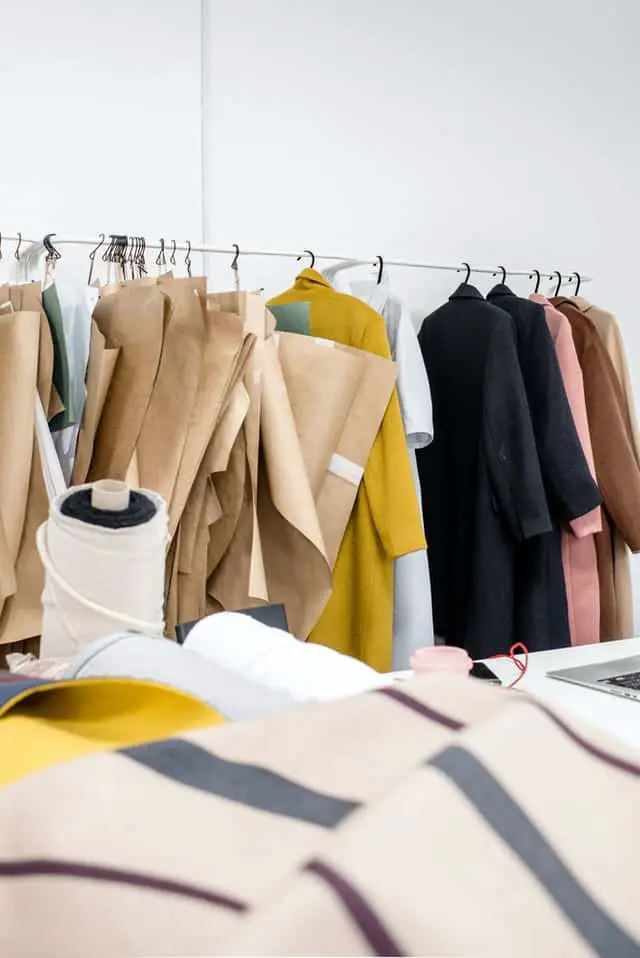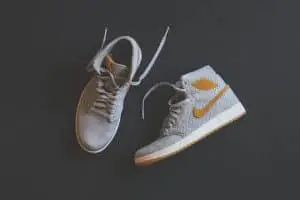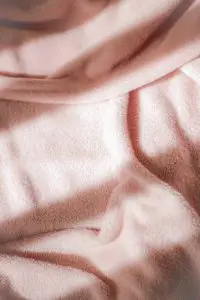The first record of the word ‘dressmaker’ was in 1803. However, dressmaking has been around for much longer. It came long before the development of spinning yarns and weaving. However, the dressmaking process was quite different from what we know presently. Dressmaking involved making clothes out of skins, plants, bark, or fur. However, the term ‘dressmaker’ didn’t exist till 1803. Women in the 19th century who weren’t interested in making their clothes hired a dressmaker to copy the latest clothing designs from London, Paris, and other fashion centres. This insightful article will carefully walk you through the history of dressmaking to help you understand the industry today.
Who is a Dressmaker?
A dressmaker is often trained professionally. In the 19th century, aspiring dressmakers learned it through the apprentice role. Most people got their lessons from formal school settings, while others met established dressmakers for lessons on the art of dressmaking. People often learn through years of trial and error to become better dressmakers. The dressmaking process usually includes measurement, trying garments, and several fittings.
There are custom dressmakers who create clothes for clients with specific needs. This includes the disabled, performers, artists, fashion-forward enthusiasts, etc. Dressmakers can recreate and redesign old garments when necessary. There are dressmakers with unique talents for creating clothes from scratch, while others usually require an existing garment or a pattern they could use as a guide.
History of Dressmaking
Over 600,000 years ago, people covered their bodies with tree leaves, animal fur, or skin. The main goal of these coverings was to protect the human body from rain, wind, sun, and cold. These clothes were usually wrapped around the shoulders or waist, tied or draped around the body. This process went on for days while people looked for food and went about their day till time created the art of dressmaking. This section will explore the history of dressmaking, starting from the textile trade that begins the Silk Road.
The Silk Trade
Most people know that there was a trading system between the Chinese and Roman Empires. This trade route is popular as it symbolizes the beginning of international and economic relations between countries. The Silk Route began to facilitate the trading of silk used in dressmaking. At the time, the Chinese Silk was the best quality and a well-hidden secret amongst the Chinese. People also transported other goods like spices, livestock, and many more through this road. The goods and the knowledge passed through this road influenced the development of the Roman Empire and civilization in Egypt.
History of Dressmaking – The Beginning
If you tried making a dress at any point, you would quickly understand that the most critical element is ensuring that the dress fit. The art of dressmaking has been around for quite a while. Some of the earliest dressmakers were linen armourers. This means they created dresses with padded linen. Soldiers wore these armours under their chain mail to protect wearers from chaffing, which was common with heavy armour. The first dressmakers were Europeans, but the art of dressmaking soon began to diversify into Western Europe. Before dressmaking became popular, people made garments from a piece of cloth, and it existed simply to cover the body. No one had an individual style, and dressmakers didn’t consider that.
However, during the renaissance era, these loose robes worn by males and females changed. Most people shortened, tightened, or gathered their garments. They were also made into shapes that closely resembled a human’s frame. Before this time, people didn’t buy dresses. Instead, women would make the dresses they wore at home, and with the new styles of dressmaking, the personal style began to develop.
The Growth of Dressmaking as a Career
As people admired clothes in different styles, bodies, and unique patterns, there was a higher demand for dressmakers. The fact that dressmakers even existed showed a significant change in people’s attitude towards clothing in general. Clothing was now necessary, and people used different dress designs to express themselves and show their status. People also turned to unique dress designs to show their best features. With the emergence of dressmakers, fashion was slowly becoming a concept.
By the 1100s, a dressmaker was a legitimate occupation; kings and queens granted privileges to their favourite dressmakers, and dressmakers kept up with innovations to stand out. From the earliest days, the art of dressmaking was mostly learned by apprenticeship. A renowned dressmaker usually teaches an aspiring dressmaker through experience. First, apprentices learned to use moulding woollen clothes to form the shape of a human body. Once they understood this process, they could then move on to showing their skills through unique elements. These apprentice dressmakers learned to create silhouettes and unique designs that drew attention to the wearer’s best features.
There was usually a master dressmaker running most dressmaking stores. The history of dressmaking showed that the master dressmaker was the face of the business and usually cut the dresses. The way a tailor-cut their dresses became their signature style. Over time, as stores grew, dressmakers hired fabric cutters to learn the master dressmaker’s signature style, and they were right next to the head dressmaker in the hierarchy. In this hierarchy, apprentices were usually at the end, and they kept the store clean and ran errands. Only when they were done with chores could they take the time to learn the basics of dressmaking.
The History of Dressmaking Costume
Most fashion detail today is due to a period when fashion took a new turn. It is only with contact with these fashion representatives that you can awaken the creative ability of a dressmaker. Knowledge of the different fashion periods can help foster originality in a dressmaker. People respected their value over the centuries because of the French’s understanding of this knowledge of different periods of fashion and the availability of these records to all in their churches, libraries, and museums. The French also constantly practiced the dressmaking skills they acquired. Therefore, the world turns to them when they need guidance and inspiration in costume.
To fully understand the history of dressmaking costumes, it is essential to survey the costumes of the Ancient Romans, Egyptians, and Grecians showing the type of dress common in their early civilization. It would be clear how different their clothing is from the time of the Gaul and the Franks who took over from Gaul, renaming the country France. By comparing their costume, it would be clear that the history of dressmaking costumes began in the sixth century.
It is hard to trace the costume history of other nations beyond the French. This is because the French began to create their fashion quite early. They also endeavoured to ensure that whatever style they created in dressmaking was exclusively theirs. As a result, men wore the same costume as women in Rome, Egypt, and Greece in the early days. There are limited records about the history of dressmaking costumes beyond this. However, the distinction between men’s and women’s dresses came during the Renaissance era.
The Industrial Revolution’s Effect on the History of Dressmaking
With the entry of the first industrial revolution, many technological advancements were now available to simplify the process of dressmaking. An example was the sewing machine in 1790 that changed the textile industry. Dressmakers could directly reduce the number of fittings a person needed, which birthed the idea of producing mass outfits. Even during the 19th century, there were department stores, and dressmakers stayed in one of the warehouses to work around the clock.
While some local dressmakers focused on serving the masses, some dressmakers offered higher-class service. An example was Alexander McQueen, famous for his impeccable dressmaking abilities. He began his dressmaking career as an apprentice and was known for providing flawless dresses to the elites. Only people who wanted a dressmaker to make unique dresses that gave them an exceptional fit went to such dressmakers. However, it was essential to also have the money to spend it.
Exclusive dressmaking began to decline with more technological advancement giving rise to mass cloth production. Dressmaking soon becomes a niche occupation, with more casual clothing taking over. People could now easily access clothes in different colours, textiles, and patterns.
Dressmaking in Today’s World
Most trends are continually moving in cycles, and the art of dressmaking isn’t different. Higher-class dressmaking made a comeback with more and more people seeking the customization of luxury dressmaking. It also gave you access to the executive crowds. Celebrities showed excitement when talking about their red-carpet designs and praised the designers and dressmakers of the outfit.
One thing is clear; dressmaking isn’t so different from how it began. Even with many technological advancements, dressmaking is still a delicate and personalized method for the higher class. For example, making a custom-fitting dress would usually take hours from the beginning to finish.
The popularity of style magazines like Vogue and Harper’s Bazaar has also increased the demand for luxury dressmaking. People notice the subtle but significant difference in wearing a custom-made dress over a mass-produced fashion item. There have also been positive body movements to make people embrace their unique shape and curve; people are seeking out dressmakers to make that happen. The right dressmaker can take your style to the next level and help you create your signature look.
A Great Online Class: Design and Create a Clothing Collection by Domestika
If you are interested in learning more about how you can create a clothing collection, we recommend taking a look at the online class “Designing Your Clothing Collection”.
The course is currently under promotion, but you can use the discount code: T_BROWNLEES-PROMO to get an additional 10% discount on your purchase.
This online class offered by Domestika, at a very inexpensive price covers all you need to know to create your clothing collection, from developing your sketches to designing accessories and more. If you apply to the course through the link below you’ll be supporting 440 Industries, and we thank you for it!
The History of Dressmaking – Final Thoughts
The history of dressmaking goes back to the beginning of the civilization of humankind. However, different eras brought about a subtle change in the art of dressmaking. Dressmaking was an honourable career, and there were different categories of dressmaking based on your needs and social status. This article also provides insight into the history of costume in the dressmaking world. We hope learning the history of dressmaking helps you further appreciate the art and its evolution over the centuries.







